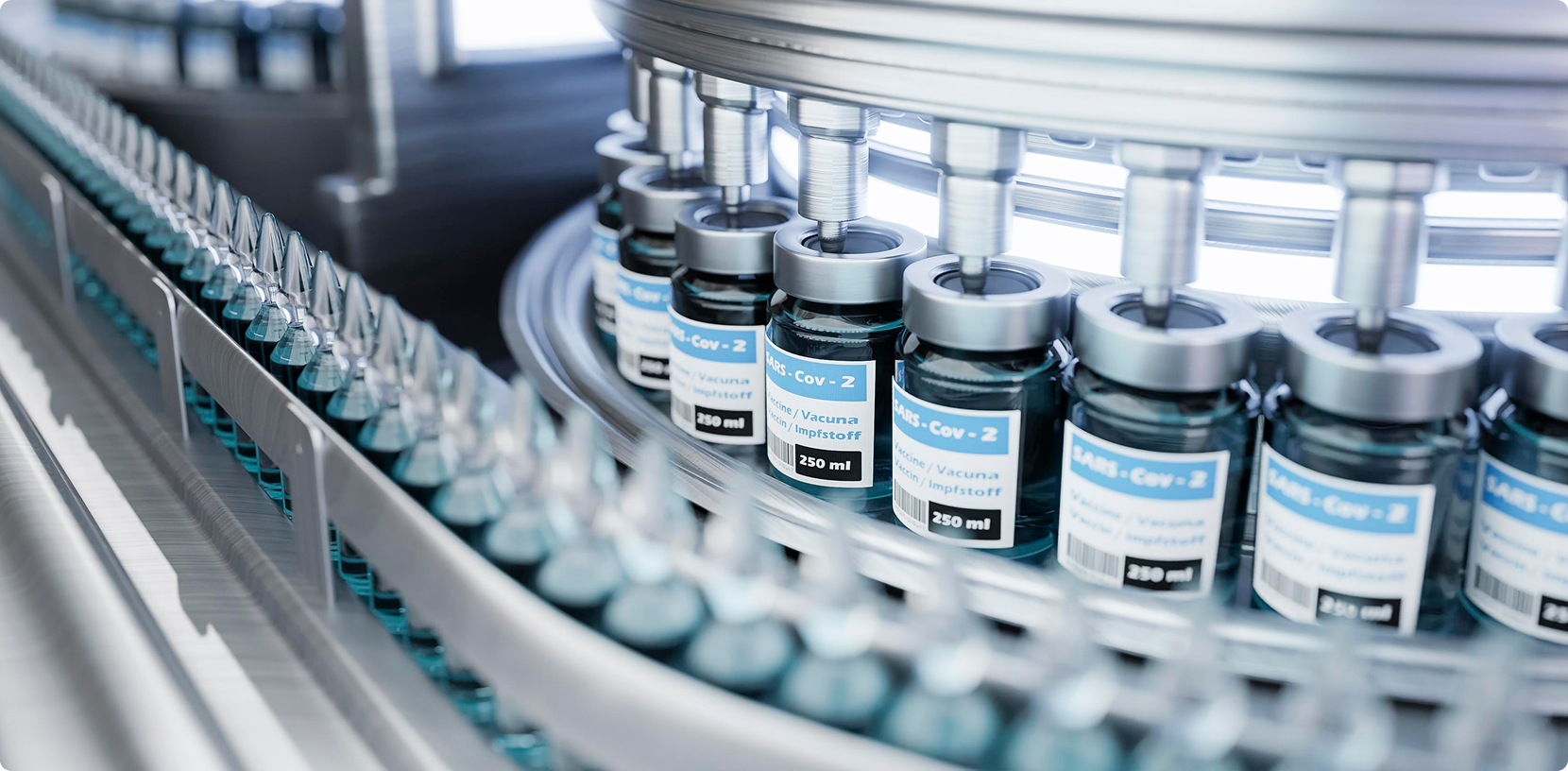When a medical device batch is rejected, the cost is staggering. A single rejection can wipe out $600K-$2M in logistics, rework, and re-sterilization costs. But the real damage goes far beyond mere dollars. Quality misses can cause strained Original Equipment Manufacturers (OEMs) and Contract Manufacturers (CMs) relationships, delay launches, and even FDA scrutiny that can put an entire supplier program at risk.
In today’s competitive environment, CMs are no longer judged only by cost and capacity. OEMs are under intense regulatory pressure and are making supplier decisions based on reliability, traceability, and inspection maturity. The CMs who stand out are the ones who can prove not just that they make high-quality parts, but that they can defend that quality with data.
This is where AI-powered visual inspection changes the game. By embedding intelligence into inspection, CMs can move from reactive firefighting to proactive quality assurance. More importantly, they can transform QA from a compliance cost into a competitive differentiator that wins OEM trust and drives long-term growth.
Why OEMs Are Raising the Bar on Supplier QA
The FDA’s recall database tells a clear story with too many recalls traced back to weak supplier QA. In medical devices, even a microscopic flaw can cause functional failure. This means a harmless, cosmetic blemish could still trigger costly batch rejection if OEMs lack confidence in their supplier’s inspection process. After all, OEMs bear the regulatory and reputational fallout if anything goes awry, so they’re demanding more from CMs than ever before.
That shift has reshaped procurement criteria in three critical ways:
- Defect rates and traceability are front and center in procurement scoring. A CM with recurring quality issues is a liability, no matter how competitive their pricing.
- Audit readiness is a baseline requirement. OEMs expect inspection logs, annotated images, and digital QA chains that stand up under FDA or ISO scrutiny.
- Contract renewals hinge on QA performance. Repeated inspection failures are among the top three reasons OEMs switch suppliers, despite the time and cost of onboarding new ones.
In short, contract manufacturing medical device quality is now a differentiator in and of itself. OEMs are choosing partners who can offer defensible, transparent QA systems that minimize regulatory risk. As we noted in our report on shifting QA upstream, this isn’t just about compliance — it’s about preserving OEm trust and protecting margins.
How AI Inspection Elevates QA from Compliance to Competitive Advantage
Manual inspection can’t keep pace with today’s medtech demands—it’s subjective, inconsistent, and difficult to scale across global supply chains. Rule-based systems improve on this by providing consistency and objectivity, but they still fall short when faced with the complexity and variability of real-world production. AI inspection, by contrast, not only scales but also adapts and generalizes across use cases, delivering the transparency OEMs want and signaling that a CM is serious about quality.
Here are four key ways CMs demonstrate QA maturity with AI:
- Combine acquisition and accuracy: AI visual inspection systems can capture ultra-high-resolution images and detect anomalies invisible to the human eye, reducing the chance of defects slipping downstream.
- Aligned thresholds: With a collaborative data science platform like Vision Copilot, CMs can train models to OEM-specific tolerances, ensuring a shared definition of “acceptable” vs. “rejectable.” This eliminates disputes over borderline defects.
- Continuous learning: AI models adapt with every batch, honing accuracy and preventing repeat issues.
- Consistency: Unlike human inspectors, AI doesn’t fatigue, enabling 100% inspection at line speed.
This isn’t just about catching more defects. It’s about showing OEMs that you have a standardized, auditable, and continuously improving QA process. That kind of inspection maturity becomes a competitive talking point in supplier scorecards and RFPs.
To see how manufacturers are already using AI inspection to strengthen OEM relationships, read 5 Ways Automated Inspection is Transforming Critical Component and Medical Manufacturing.
Real-Time Dashboards as a Trust Signal
OEMs don’t want QA to be a black box. They want visibility, in real-time. When CMs can provide this, especially in an easy-to-use dashboard like Vision Command, it turns QA data into a relationship-building tool.
Instead of waiting for static reports or chasing down supplier updates, OEMs gain a clear window into production quality as it happens. That visibility delivers several critical advantages:
- Immediate visibility: OEMs can monitor defect rates and inspection outcomes in real time, not weeks later.
- Audit-ready records: Dashboards typically include annotated images, timestamps, and model versions, enabling OEMs and CMs to produce defensible documentation that makes audits smoother.
- Shared performance data: OEMs and CMs look at the same quality record, aligning reviews and eliminating back-and-forth.
This transparency accelerates onboarding, reduces friction, and signals accountability. OEMs increasingly expect this level of visibility, much like they expect supply chain traceability. Dashboards make inspection results not just compliance records, but trust signals.
Interested in learning more about the technologies behind the dashboards that power inspection dashboards? Check out Computer Vision vs. Image Processing and why AI makes transparency possible at scale.
Protecting Margins and Enabling Growth
Advanced visual inspection isn’t just a compliance investment, it’s a profitability driver. By reducing false rejects and unnecessary rework, AI can help CMs distinguish cosmetic blemishes from critical defects, so they avoid scrapping parts that actually meet performance standards. This directly protects margins and reduces waste.
At the same time, OEM renewals and expansions favor suppliers who can consistently demonstrate reliable, auditable QA. New account wins often hinge on quality metrics and inspection transparency, meaning that CMs who can share real-time QA data gain a measurable edge in competitive bids. Over the long term, this positions quality leadership as part of the CM’s brand equity. A supplier known for delivering audit-ready, defect-free products becomes harder to replace — and more attractive to OEMs looking for partners they can trust.
These advantages become even clearer in practice.
Consider two real-world scenarios that highlight opposite sides of the same challenge:
- A CM producing catheter tips faced recurring microscopic occlusions that were only being detected at the very end of the line, after sterilization. By installing Vision Assist at final assembly, the defects were flagged in real time and defective products scrapped immediately. This move eliminated re-sterilization costs, preserved throughput, and ensured a clean batch delivered to the OEM on schedule.
- A surgical instrument manufacturer that struggled with over-inspection. Minor surface scratches that were purely cosmetic and clinically irrelevant were repeatedly triggering scrap and rework. With Vision Copilot, the CM trained models to distinguish harmless blemishes from critical flaws. Yield improved, unnecessary waste declined, and the OEM gained confidence that serious defects would never be overlooked.
Together, these cases show how AI inspection delivers a double benefit — preventing catastrophic rejections when flaws are functional, and protecting profitability when they aren’t. That balance is what helps CMs win OEM trust and turn QA into a lever for growth. For a business case analysis, see The ROI of Automated Inspection in Manufacturing.
Turning QA into a Revenue Driver
In contract manufacturing, quality is no longer a downstream checkpoint — it’s a competitive advantage. OEMs are prioritizing CMs who can prove inspection accuracy, audit readiness, and defect traceability.
With Akridata, AI-powered inspection goes beyond catching flaws. It builds transparency, secures renewals, accelerates onboarding, and positions CMs as indispensable partners.
In today’s medtech environment, precision is the currency of trust. CMs who embrace intelligent inspection don’t just protect margins, they grow them.
Ready to turn QA into a lever for growth?
Contact us today to see how we can help you transform your inspection processes.
Ready to turn QA into your strongest differentiator?
- Reducing false rejects and costly rework by distinguishing cosmetic blemishes from critical defects
- Creating transparent, audit-ready QA records that strengthen OEM trust
- Using real-time dashboards to align with OEM quality standards and accelerate onboarding
- Leveraging AI-powered inspection to protect margins and win new business
Download the full report today and see how upstream QA and AI inspection can help your organization stand out in a competitive supplier landscape.



No Responses